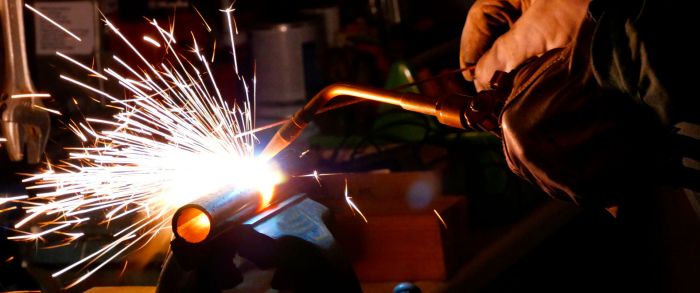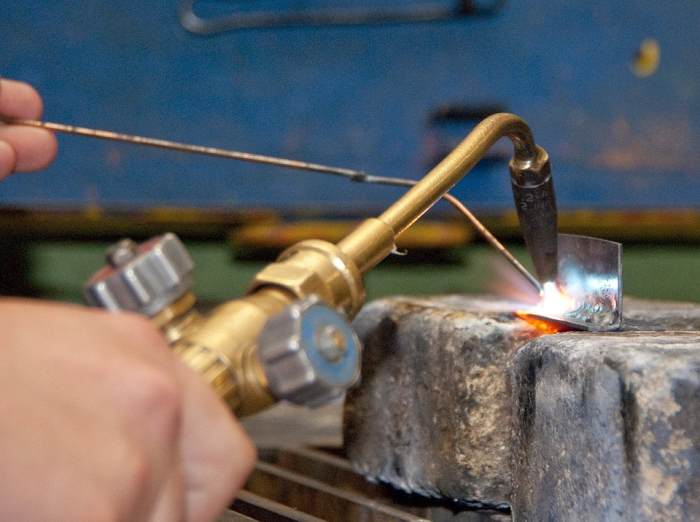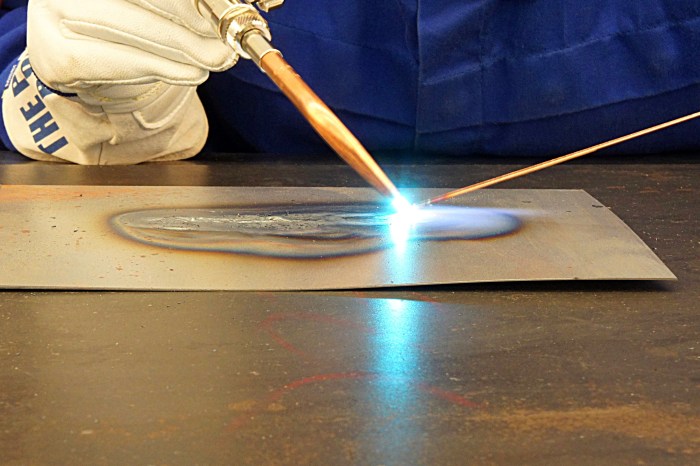The oxyacetylene flame used for aluminum welding should – The oxyacetylene flame plays a crucial role in aluminum welding, offering unique properties and requiring specific considerations to achieve optimal results. This comprehensive guide explores the characteristics of the oxyacetylene flame, its adjustment techniques, joint preparation, welding techniques, filler material selection, and essential safety precautions, providing a thorough understanding for effective aluminum welding.
Welding Characteristics: The Oxyacetylene Flame Used For Aluminum Welding Should

The oxyacetylene flame used for aluminum welding possesses unique properties that influence the welding process. The flame’s high temperature and concentrated heat source allow for efficient melting and fusion of aluminum. Additionally, the flame’s reducing nature helps protect the weld from oxidation, resulting in strong and corrosion-resistant joints.
Flame Adjustment
Proper flame adjustment is crucial for optimal welding results. A neutral flame is generally preferred for aluminum welding, as it provides a balance between oxidation and reduction. To achieve a neutral flame, the oxygen and acetylene flow rates must be adjusted to create a slightly luminous flame with a sharp inner cone.
An oxidizing flame, with excess oxygen, can lead to excessive oxidation of the weld, while a reducing flame, with excess acetylene, can cause porosity and embrittlement.
Joint Preparation, The oxyacetylene flame used for aluminum welding should
Proper joint preparation is essential for successful aluminum welding. The joint surfaces should be cleaned thoroughly to remove any contaminants that could interfere with the welding process. Beveling the joint edges can help create a stronger weld by increasing the surface area for fusion.
Proper fit-up of the joint is also important to ensure proper penetration and avoid gaps or overlaps.
Welding Techniques
Various welding techniques can be used with the oxyacetylene flame for aluminum welding, including:
- Forehand welding: The torch is held in front of the weld pool, with the flame directed towards the leading edge of the weld.
- Backhand welding: The torch is held behind the weld pool, with the flame directed towards the trailing edge of the weld.
- Puddle welding: The torch is held perpendicular to the weld joint, with the flame focused on melting the base metal and creating a weld pool.
FAQ
What is the optimal flame adjustment for aluminum welding?
A neutral flame, with a slightly reducing inner cone, provides the best balance of heat and protection for aluminum welding.
How should the joint be prepared for aluminum welding?
The joint should be cleaned, beveled to a 45-degree angle, and fitted tightly to minimize gaps and ensure proper penetration.
What type of filler material is recommended for aluminum welding with the oxyacetylene flame?
Aluminum-silicon alloys, such as 4043 and 5356, are commonly used as filler materials for aluminum welding with the oxyacetylene flame.


